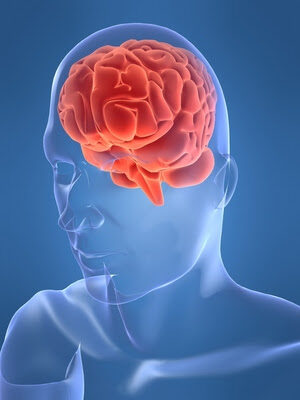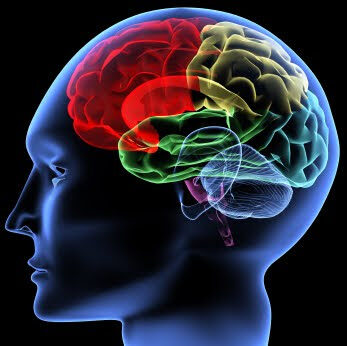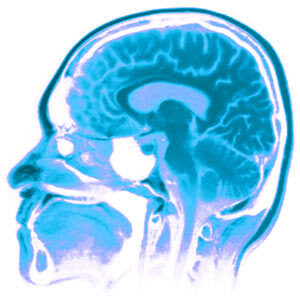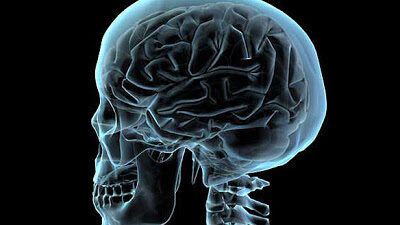“Nonbelievers may take special pleasure in making assertions that
explicitly negate religious doctrine”
It must be refreshing when you can be introduced as “Neuroscientist” and not as “The militant-activist-Buddhist-mystic-atheist.” Such is the nomenclature which Sam Harris has traversed.
Yet, one must wonder if a change in label equals a change in substance.
The Neural Correlates of Religious and Nonreligious Belief is a study recently conducted by Sam Harris, Jonas T. Kaplan, Ashley Curiel, Susan Y. Bookheimer, Marco Iacoboni and Mark S. Cohen.
Before getting to the substance of the study, which I am most certainly not qualified to dissect from a neuroscientific perspective, it seemed to me important to make a point about Sam Harris.
In Sam Harris we are dealing with a person who has admitted that he did not get into the field of science in order to perform the ideal task of an unbiased researcher who is prepared to do away with a lifetime’s worth of research and published opinions when it is toppled by contradicting evidence. Rather, we are dealing with someone who holds to an a priori conclusion and has become a scientist in order to, as I will state it, seek to find evidence that will reinforce his conclusions and or place a thin veneer of scientific respectability as a façade around his militant atheistic opinions.
We can certainly hope that Kaplan, Curiel, Bookheimer, Iacoboni and Cohen were able to balance Sam Harris’ biased and predetermined goal based research. It may also be note worthy that the study was funded, in part, by The Reason Project of which Sam Harris is the co-founder and CEO. Within the study the The Reason Project is described as a “foundation whose mission includes conducting original scientific research related to human values, cognition, and reasoning.” Note the qualifier “includes.” This is quite accurate as The Reason Project is basically an atheist blog which provides a platform from which to besmirch theism. Apparently, conducting original scientific research related to human values, cognition, and reasoning includes, as a mere example, a page on “Language in The Scripture Project” the icon for which is this expletive implying call out box:

For some odd reason, the page includes quotations from the Bible where the text includes words such as “fool,” “whoring,” “mischief,” etc. (most times it is simply difficult to discern the point or which word is considered objectionable and it certainly does not provide a premise for considering any language whatsoever as being objectionable in the first place).
The Reason Project’s advisory board includes, surely, unbiased personages such as Richard Dawkins, Daniel C. Dennett, Anthony Grayling, Christopher Hitchens, Bill Maher, Steven Weinberg, etc. Part of what The Reason Project funded was “subject recruitment.”
Before this begins to sound like an ad hominem I will present the evidence which affirms my statement about Sam Harris’ admission as to why he became a scientist. Consider his answer when he was asked, “What do you believe is true even though you cannot prove it?”:
What I believe, though cannot yet prove, is that belief is a content-independent process. Which is to say that beliefs about God—to the degree that they are really believed—are the same as beliefs about numbers, penguins, tofu, or anything else… What I do believe, however, is that the neural processes that govern the final acceptance of a statement as ‘true’ rely on more fundamental, reward-related circuitry in our frontal lobes—probably the same regions that judge the pleasantness of tastes and odors… Once the neurology of belief becomes clear, and it stands revealed as an all-purpose emotion arising in a wide variety of contexts (often without warrant), religious faith will be exposed for what it is: a humble species of terrestrial credulity. We will then have additional, scientific reasons to declare that mere feelings of conviction are not enough when it comes time to talk about the way the world is.
The only thing that guarantees that (sufficiently complex) beliefs actually represent the world, are chains of evidence and argument linking them to the world…Understanding belief at the level of the brain may hold the key to new insights into the nature of our minds, to new rules of discourse, and to new frontiers of human cooperation…1
Note the future-hopes qualifiers, “…yet…Once…will be…We will then…” Notice his staked deck: religious faith is a humble species of terrestrial credulity and once the neurology of belief becomes clear religious faith will be exposed for what it is: a humble species of terrestrial credulity. Sam Harris is clearly setting out to prove what he already believes to be true—no doubt, he will prove his beliefs even by gyrations that will strain the very neurons upon which he will be experimenting.
He has also stated:
If we better understood the workings of the human brain, we would undoubtedly discover lawful connections between our states of consciousness, our modes of conduct, and the various ways we use our attention. If we ever develop such a science, most of our religious texts will be no more useful to mystics than they now are to astronomers.2
Mind you, we will “undoubtedly” come to his a priori conclusion. It also may be of interest that the reference section of the study is tantamount to an atheist library as it includes titles such as:
The Future Of An Illusion Society Without God Religion Explained: The Evolutionary Origins Of Religious Breaking The Spell: Religion As A Natural Phenomenon Religious Thought And Behaviour As By-Products Of Brain Function Born Believers: How Your Brain Creates God Why We Believe In The Unbelievable
Exploring The Natural Foundations Of Religion
Also, on occasion one may discern the Harrisian influence in statements such as a reference to the Roman Catholic doctrine of Transubstantiation (which I wrote about here) along with a statement that it is one of the “doctrinal claims that are still put forward by the Church” (emphasis added).
Also, note that the study states, “There seems little reason to doubt that a significant percentage of human beings, likely a majority, falls into this latter category” people who “people actually believe what they say they believe” “with respect one or another religious creed” as opposed to those with “mere profession of such beliefs and actual belief” (emphasis in original). At this point a citation is provided to Daniel Dennett’s Breaking The Spell: Religion As a Natural Phenomenon which, everyone knows or should know, is not meant to present a conclusion but is meant (despite its superiority complex and the fact that to Dennett it is an a priori conclusion) to be heuristic as it recommending models for further study of Dennett’s a priori commitment to “Religion As a Natural Phenomenon” or, “a humble species of terrestrial credulity.”
Moreover, note that the study states:
The relevance of the brain’s ventromedial dopaminergic systems to religious experience, belief and behavior is suggested by several lines of evidence…The serotonergic system has also been implicated, as drugs known to modulate it—like… LSD, psilocybin, mescaline, N,N-dimethyltryptamine (“DMT”), and 3,4-methylenedioxymethamphetamine (“ecstasy”)—seem especially potent drivers of religious/spiritual experience. In addition, 5-HT1A receptor densities have been inversely correlated with high scores on the “spiritual acceptance” subscale of the Temperament and Character Inventory.
If not clinically qualified to speak on this point, Sam Harris is at least qualified via personal experience. This is because he has personally partaken in various such substances which resulted in his “spiritual acceptance” of Buddhist mysticism (even though he does not like the terms “Buddhist,” “mysticism” or “atheist” for that matter, and he would qualify “spiritual” as a materialistic brain function).
Now to the study itself: personally I am stunned at how we can come to conclusions about religious and nonreligious belief based on this study. Religious believe has been around for millennia upon millennia and a few millennia besides and religious beliefs have taken place across the human landscape regardless of chronology, geography and theology. As for nonreligious beliefs; these two have a long history and variety. Yet, we are told that we can know something about religious beliefs based on tests conducted on 15 Christians and about nonreligious beliefs based on 15 “Nonbelievers.”
The study,
enrolled 54 subjects who were (1) between the ages of 18–30, (2) not taking anti-depressants, (3) neurologically healthy, (4) free of obvious psychiatric illness or suicidal ideation, and (5) native speakers of English as their first language…[the study] attempted to balance these groups with respect to 1) general reasoning ability, 2) age, and 3) years of education. We also sought to exclude all subjects who exhibited signs of psychopathology. To this end we assessed subjects’ general intelligence…Our final study consisted of data acquired from 30 subjects (15 Christians; 15 Nonbelievers; 7 men and 8 women in each group).
Obviously, this is a skewed sample: only Christians, only English speaking, and whoever these generic “Nonbelievers” are. Yet, to be fair the study admits these limitations in noting,
We note, however, that the subjects retained in this experiment do not represent the full range of religious commitment found in the general population.
Yet, such skewed and or miniscule samples are something of which to be aware. I was reminded of the North Western University study which concluded that “Political conservatives operate out of a fear of chaos and absence of order” based on interviewing “128 devout Christians in and around Chicago.”
The Sam Harris study’s background statement notes:
While religious faith remains one of the most significant features of human life, little is known about its relationship to ordinary belief at the level of the brain. Nor is it known whether religious believers and nonbelievers differ in how they evaluate statements of fact… We used functional magnetic resonance imaging (fMRI) to measure signal changes in the brains of thirty subjects—fifteen committed Christians and fifteen nonbelievers—as they evaluated the truth and falsity of religious and nonreligious propositions. For both groups, and in both categories of stimuli, belief (judgments of “true” vs judgments of “false”) was associated with greater signal in the ventromedial prefrontal cortex…
This region showed greater signal whether subjects believed statements about God, the Virgin Birth, etc. or statements about ordinary facts. A comparison of both stimulus categories suggests that religious thinking is more associated with brain regions that govern emotion, self-representation, and cognitive conflict, while thinking about ordinary facts is more reliant upon memory retrieval networks…
The study’s introduction notes:
Since the 19th century, it has been widely assumed that the spread of industrialized society would spell the end of religion. Marx, Freud, and Weber—along with innumerable anthropologists, sociologists, historians, and psychologists influenced by their work—expected religious belief to wither in the light of modernity. It has not come to pass. Religion remains one of the most prominent features of human life in the 21st century. While most developed societies have grown predominantly secular, with the curious exception of the United States, orthodox religion is in full bloom throughout the developing world. Indeed, humanity seems to becoming proportionally more religious, as the combination of material advancement and secularism is strongly correlated with decreased fertility. When one considers the rise of Islamism throughout the Muslim world, the spread of Pentecostalism throughout Africa, and the anomalous piety of the United States, it becomes clear that religion will have geopolitical consequences well into the 21st century…
while religious and nonreligious thinking differentially engage broad regions of the frontal, parietal, and medial temporal lobes—and, hence, appear quite distinct as modes of thought—the difference between belief and disbelief appears to be content-independent…
The study’s Belief compared with disbelief section notes:
Our finding of greater signal in VMPFC for belief compared to disbelief was significant in both Christians and nonbelievers for both religious and nonreligious stimuli, supporting a role for this brain region in the acceptance of truth-claims across content domains. A direct comparison of belief minus disbelief in Christians and nonbelievers did not show any significant group differences for nonreligious stimuli. For religious stimuli, there were additional regions of the brain that did differ by group, however these results seem best explained by a common reaction in both groups to statements that violate religious doctrines…
The opposite contrast, disbelief minus belief, yielded increased signal in the superior frontal sulcus and the precentral gyrus. The engagement of these areas is not readily explained on the basis of prior work…
The study’s Religious compared with Nonreligious statements section notes:
While the contrast of belief minus disbelief yielded similar activation patterns for both stimulus categories, a comparison of all religious trials to all nonreligious trials produced a wide range of signal differences throughout the brain… The opposite contrast, nonreligious minus religious statements, produced greater signal in left hemisphere networks, including the hippocampus, the parahippocampal gyrus, middle temporal gyrus, temporal pole, and retrosplenial cortex…It is well known that the hippocampus and the parahippocampal gyrus are involved in memory retrieval. The anterior temporal lobe is also engaged by semantic memory tasks, and the retrosplenial cortex displays especially strong, reciprocal connectivity with structures in the medial temporal lobe. Finally, among our religious stimuli, the subset of statements that ran counter to Christian doctrine yielded greater signal for both groups in several brain regions…
These regions showed greater signal both when Christians rejected stimuli contrary to their doctrine (e.g. “The Biblical god is a myth”) and when nonbelievers affirmed the truth of those same statements…
The study (or Sam Harris in particular?) notes that the atheist, anthropologist, professor and author Pascal Boyer believes that,
religious beliefs and concepts must arise from mental categories and cognitive propensities that predate religion—and these underlying structures might determine the stereotypical form that religious beliefs and practices take. These categories relate to things like intentional agents, animacy, social exchange, moral intuitions, natural hazards, and ways of understanding human misfortune. On Boyer’s account, people do not accept implausible religious doctrines because they have relaxed their standards of rationality; they relax their standards of rationality because certain doctrines fit their “inference machinery” in such a way as to seem credible.
Note that it “must arise from mental categories and cognitive propensities that predate religion.” For the sake of accuracy, note that this is not a direct quote from Boyer but the study states that this is “According to Boyer.” But why “must” it be so and how do we know that it “must” be so? Because according to an atheist worldview there are no other options.
Pascal Boyer is the author of Religion Explained: The Evolutionary Origins Of Religious. His home page states that he is a “proponent of the theory that the human mind is predisposed to hold and spread certain types of religious beliefs” and that his research,
is aimed at describing neuro-cognitive systems that [a] are part of the normal make-up of human minds as a result of evolution by natural selection…This cognitive framework was developed to account for the recurrent properties of religious concepts and norms in different cultures…Religious concepts and norms can be explained as a by-product of standard cognitive architecture.
Moreover, the study notes that atheist and Professor of Psychology at Yale University in New Haven, Connecticut, Paul Bloom, makes reference to,
“common sense dualists”—that is, we may be constitutionally inclined to see mind as distinct from body and, therefore, will tend to intuit the existence of disembodied minds at work in the world. This could lead us to presume ongoing relationships with dead friends and relatives, to anticipate our own survival of death, and to generally conceive of people as having immaterial souls.
The study goes on to state that,
A variety of experiments suggest that children are predisposed to assume both design and intention behind natural events—leaving many psychologists and anthropologists to believe that children, left entirely to their own devices, would invent some conception of God…
Because our minds have evolved to detect patterns in the world, we may tend to detect patterns that aren’t actually there—ranging from faces in the clouds to a divine hand in the workings of Nature…
Thus, they rely on “the evolutionary underpinnings of religion.” The atheistic bias is readily discernable as “left entirely to their own devices, would invent some conception of God.” Apparently, it would be simply inconceivable that they would recognize God’s existence via natural theology (inferring a creator from philosophic musing and scientific observation) but would “invent” such a concept. Moreover, note further atheist bias in refusing to at least admit the possibility that because our minds have evolved to detect patterns in the world, we may tend to detect patterns that indeed are actually there.
The study, refreshingly, makes a point to note the interpretive aspect of the soft side of neuroscience. This amounts to 1) being vaguely, or even certainly, aware of what a certain region of the brain does 2) then stimulating the subject, in this case with questions, 3) noting which region of the brain activates and finally, 4) drawing inferences and concocting interpretations (which can all too easily be influenced by worldview adherence, schools of thought, a priori bias, etc.).
The study notes (with my emphasis added):
these data are of greater value when interpreted against related results in the neuroscientific literature. Such a discussion necessarily entails “reverse inference” of a sort often considered problematic in the field of neuroimaging.
One cannot reliably infer the presence of a mental state on the basis of brain data alone, unless the brain regions in question are known to be truly selective for a single state of mind.
As the brain is an evolved organ, with higher order states emerging from lower order mechanisms, very few of its regions are so selective as to fully justify inferences of this kind. Nevertheless, our results appear to make at least provisional sense of the emotional tone of belief. And whatever larger role our regions of interest play in human cognition and behavior, they appear to respond similarly to putative statements of fact, irrespective of content, in the brains of both religious believers and nonbelievers.
As for the atheist assertion that “the brain is an evolved organ” (or devolved, considering that Neanderthals had larger brain than do we) it may be of interest to note certain atheist’s statements about brain:
Pierre Jean Georges Cabanis, “The brain secretes thought as the liver secretes bile.”
Karl Vogt, “The brain secretes thought as the stomach secretes gastric juice, the liver bile, and the kidneys urine.”
Dan Barker, [the human brain was], “haphazardly jury-rigged accidentally randomly put together for survival reasons, for adaptability.”3
Daniel Dennett refers to our brains as being “stone age.”
Christopher Hitchens makes reference to “the mind” as “the only thing that we’ve got that makes us higher primates, the faculty of reason.”4
Annie Laurie Gaylor, “The only ‘higher power’ we can truly invoke lies in our own minds and our own intelligence.”5
Overall, the study,
was designed to produce high concordance on nonreligious stimuli (e.g., “Eagles really exist”) and high discordance on religious stimuli (e.g., “Angels really exist”). The fact that we found essentially the same signal maps for belief minus disbelief in both groups, on both categories of content, argues strongly for the content-independence of belief and disbelief as cognitive processes. Despite the fact that religious believers and nonbelievers accepted and rejected diametrically opposite statements in half of our experimental trials, the same neural systems were engaged in both groups throughout…
[Barbey D.] Kapogiannis et al. also found signal in the insula to be correlated with the rejection of religious statements deemed false…Because Kapogiannis et al. did not include a nonreligious control condition in their experiment, they interpreted the insula’s recruitment as a sign that violations of religious doctrine might provoke “aversion, guilt, or fear of loss” in people of faith…
Just in case; note the qualifying terms again, “interpreted …might.”
An interesting point in the study is as follows:
We note that a possible difference between responding to our religious and nonreligious stimuli is that, for both groups, a person’s answers could serve to affirm his or her identity: i.e. for every religious trial, Christians were explicitly affirming their religious worldview, while nonbelievers were explicitly denying the truth-claims of religion…
Finally, there were several regions that showed greater signal in both groups in response to “blasphemous” statements (i.e. those that ran counter to Christian doctrine). The ventral striatum signal in this contrast suggests that decisions about these stimuli may have been more rewarding for both groups: Nonbelievers may take special pleasure in making assertions that explicitly negate religious doctrine, while Christians may enjoy rejecting such statements as false.
Lastly, note that Newsweek interviewed Sam Harris about the study and he stated,
“We seem to be doing the same thing when we accept a proposition about God or the virgin birth as we do about astronomy”… his results “cut against the quite prevalent notion that there’s something else entirely going on in the case of religious belief”…The bigger picture, from Harris’s point of view, is that science urgently needs to get involved in the biggest questions of human existence—good, evil, morality, ethics, and what he calls “human well-being”—and not cede these to the religious sphere.
Yet again, we see that this is about battling “religion” and not merely to conduct unbiased scientific research.
Overall, the study peppered some atheistic presuppositions throughout, had an a priori conclusion in mind and yet, made some interesting points. ~~~~~~~~~~~~~~~~~~~~~~~~~~~~~
For a great dissecting of Harris’ paper by a statistician, see William M. Briggs’ “Can fMRI Predict Who Believes In Santa Claus? Or God? Part I” and follow his links to the parts which follow.




